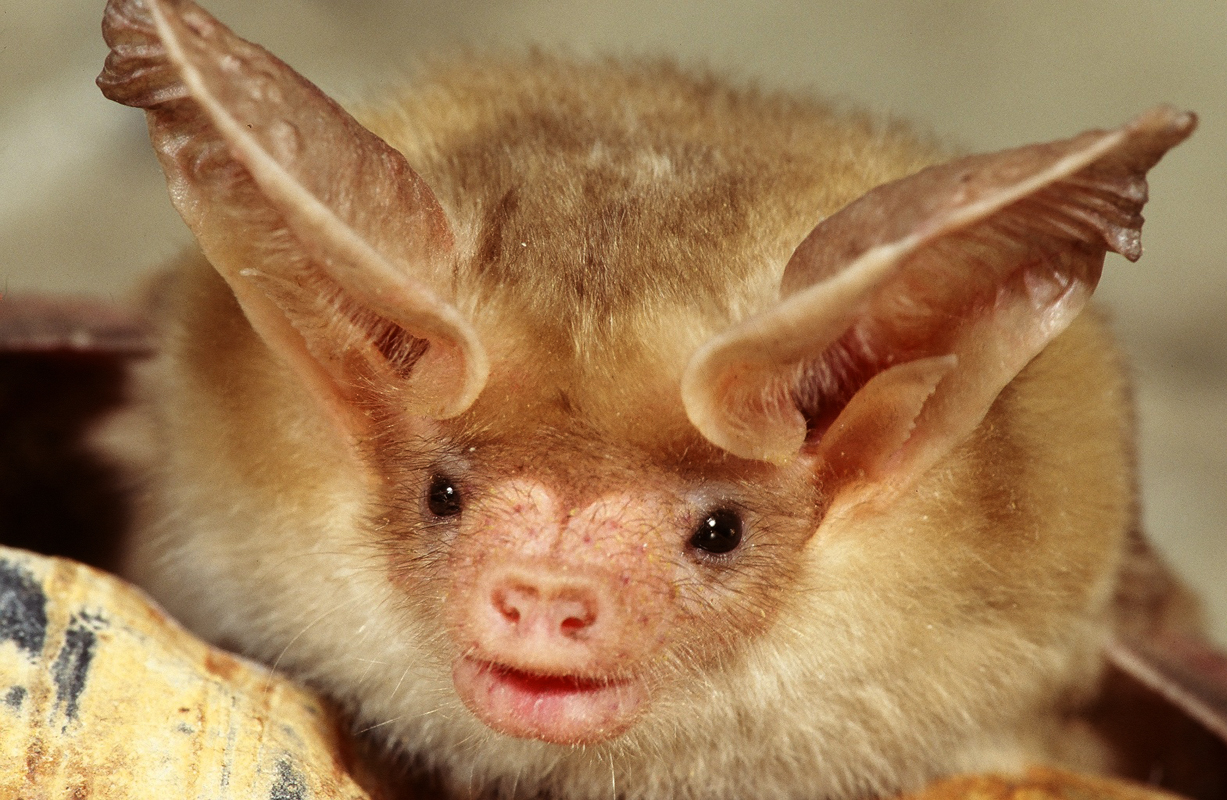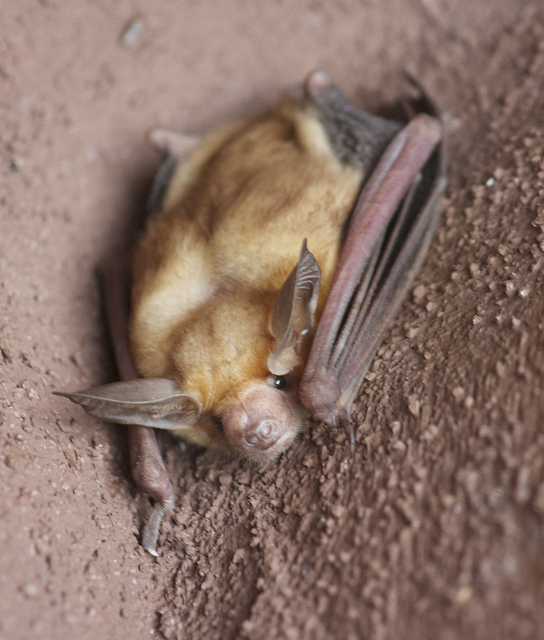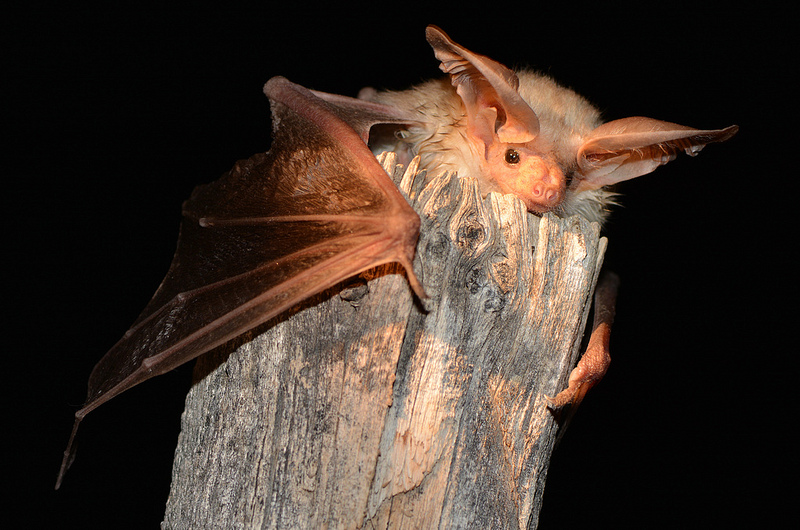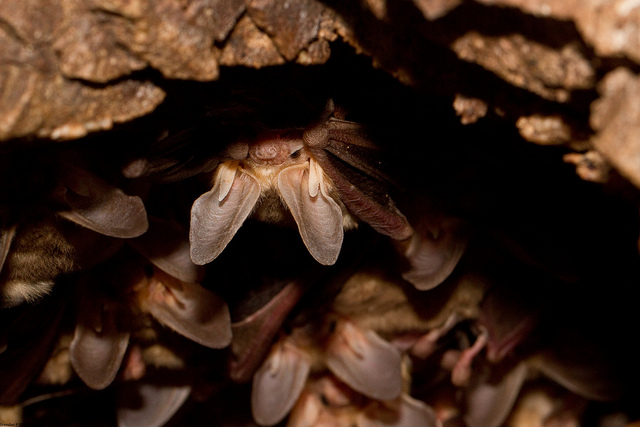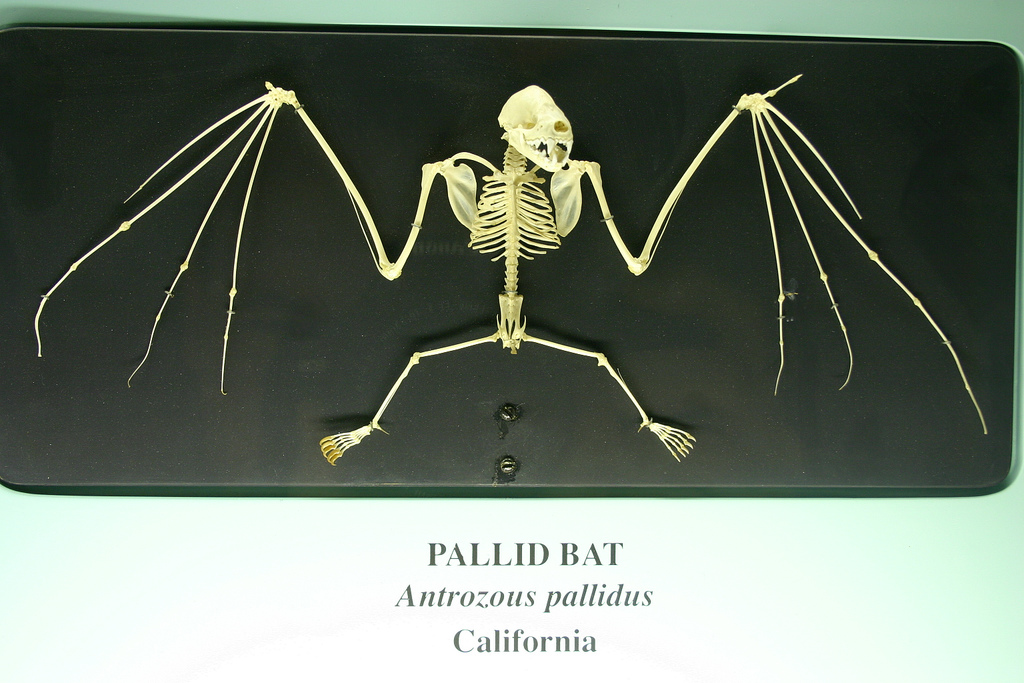Adaptation
Have you ever wondered how a pallid bat is able to find its food in the dark, or how it knows exactly where to go to get back home after hunting? Pallid bats (Antrozous pallidus) are experts at finding prey without being dependent on light. Thanks to certain cells in the pallid bat’s ear, the bat is able to use a mechanism known as echolocation (Fuzessery et al., 2010). Echolocation is a process that allows the bat to pinpoint the exact location of their prey by emitting sound waves. This is possible because the sounds waves from the bat bounce off the prey and are sent back to the bat; it then uses the specialized cells in its ear to detect the locale of the prey (Harris, 2001). Being night-hunters is very advantageous for pallid bats; by hunting at night, pallid bats are active when their predators (like owls, for an example click here) are less active. In other words, pallid bats are out and about when some of their predators are sleeping. Also, since pallid bats mainly feed on insects (like a grasshopper that’s similar to the one here), they will have a more abundant supply of food because insects are also more active at night (Harris, 2001). Since being able to use echolocation is extremely advantageous, the structures for the use of echolocation develop relatively early in pallid bats: usually around eight days old (Hermanson and O’Shea, 1983). These adaptations are essential for pallid bats to safely and successfuly swoop through the night sky to capture prey.
Although the dominant method of direction and navigation in pallid
bats is echolocation, their sense of smell is also used; it is
well-adapted to draw pallid bats to the urine of other members of the same
species (Hermanson and O’Shea, 1983). This ability is especially
useful for recognizing enemies and for finding mates.
Finding their
roosting sites after hunting may seem difficult for pallid bats
because of the lack of daylight; however, pallid bats have adapted
certain “rituals” for navigating back home (Arnold and Wilkinson,
2011). An example would be the
use of calls. Pallid bats create loud, fast calls as a social cue to
assemble fellow pallid bats to locate the roost (Arnold and
Wilkinson, 2011). Individuals who are returning from hunting sound
these calls and wait for the returning calls made by the bats that
stayed in the roost
(Arnold and Wilkinson, 2011). Since the calls are specific to the
colony, the bats searching for their roost are able to distinguish
the difference between the bats in their colony to bats in a
different colony (Arnold and Wilkinson, 2011).
Movement is an extremely useful and significant aspect of adaptation in pallid bats; it’s how they locate prey, find a mate, and establish areas to hibernate and roost. It has been discovered that pallid bats do not partake in regular, long-distance, seasonal migrations (Harris, 2001). That being said, they do travel relatively short distances (less than 200 kilometers) to search for hibernation sites and breeding grounds (Harris, 2001). Because pallid bats are able to preserve a steady body temperature during hibernation, it is beneficial for them to hibernate in areas such as crevices in canyons or in deep caves where the temperature remains more stable (TPW Foundation). A favorable adaptation of pallid bats has evolved to help preserve the integrity of the wings. Pallid bats have the ability to repair injured wings by merging broken bone and fusing the impaired tissue that surrounds the bone (Hermanson and O’Shea, 1983). This is of course extremely important to pallid bats because they rely so heavily on flight.
Return to Classification Go to Habitat
Return Home
